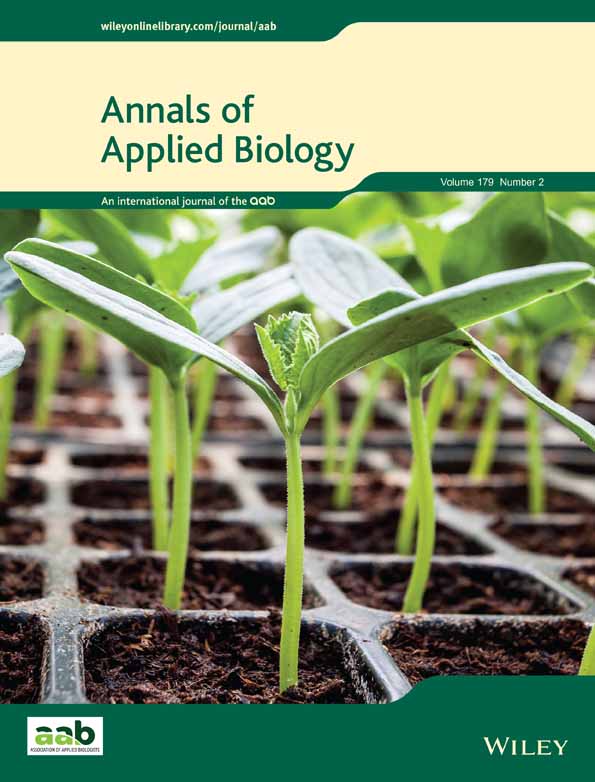Ver ítem
- xmlui.general.dspace_homeCentros Regionales y EEAsCentro Regional Santa FeEEA RafaelaArtículos científicosxmlui.ArtifactBrowser.ItemViewer.trail
- Inicio
- Centros Regionales y EEAs
- Centro Regional Santa Fe
- EEA Rafaela
- Artículos científicos
- Ver ítem
Combined effect of salinity and hypoxia in seedlings of two varieties of Panicum coloratum: morphology, root system architecture, oxidative damage and antioxidant response
Resumen
The effect of the combination of salinity and waterlogging may be additive, or alternatively, more or less detrimental than effects of them separately. Our objective was to evaluate the effects of waterlogging, salinity and the combination of both on seedlings of Panicum coloratum, a subtropical forage grass. Seedlings of cultivars Kapivera-INTA (KA) and Klein (KL) were exposed to treatments in a controlled hydroponic experiment and several morphological
[ver mas...]
The effect of the combination of salinity and waterlogging may be additive, or alternatively, more or less detrimental than effects of them separately. Our objective was to evaluate the effects of waterlogging, salinity and the combination of both on seedlings of Panicum coloratum, a subtropical forage grass. Seedlings of cultivars Kapivera-INTA (KA) and Klein (KL) were exposed to treatments in a controlled hydroponic experiment and several morphological and physiological variables evaluated. The effect of hypoxia was almost null when the plants were already in salinity. KA showed lower reduction than KL in shoot biomass. Both varieties showed synergistic effect of stresses, indicating that biomass production was less affected under the combined treatment than predicted from them separately. Root length, tips, forks and volume were reduced by saline exposure, while no differences in root architecture was noticeable between cultivars. Plants of KA increased leaf temperature in salinity. Non-enzymatic oxidative response and the activity of antioxidant enzymes increased in saline conditions and were lower in KA than in KL. Oxidative damage was equivalent between cultivars and among stress conditions. Proline content was comparable to control in hypoxia but increased significantly in saline conditions, with a higher response in KL than in KA. Increases in Na+ (over 900%) and decreases in K+ (50%) tissue concentration in salinity occurred only in KA. In general, P. coloratum proved more tolerant to hypoxia than to salinity or their combination, Kapivera-INTA being more tolerant than Klein. Findings provide basis to deepen research into tolerance mechanisms.
[Cerrar]

Autor
Lifschitz, Mauro Ezequiel;
Tommasino, Exequiel Arturo;
Zabala, Juan Marcelo;
Grunberg, Karina;
Ramos, Julio Cesar;
Tomas, Maria Andrea;
Fuente
Annals of Applied Biology (First published: 28 September 2021)
Fecha
2021-09
Editorial
Wiley
ISSN
0003-4746
1744-7348
1744-7348
Formato
pdf
Tipo de documento
artículo
Palabras Claves
Derechos de acceso
Embargado
 Excepto donde se diga explicitamente, este item se publica bajo la siguiente descripción: Creative Commons Attribution-NonCommercial-ShareAlike 2.5 Unported (CC BY-NC-SA 2.5)
Excepto donde se diga explicitamente, este item se publica bajo la siguiente descripción: Creative Commons Attribution-NonCommercial-ShareAlike 2.5 Unported (CC BY-NC-SA 2.5)

